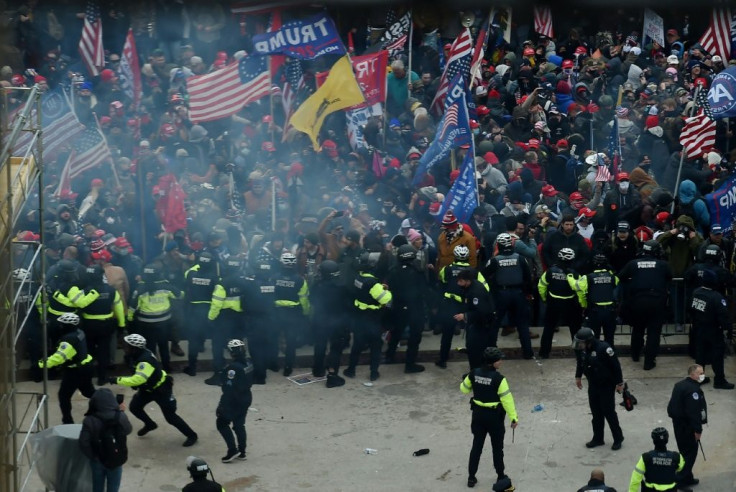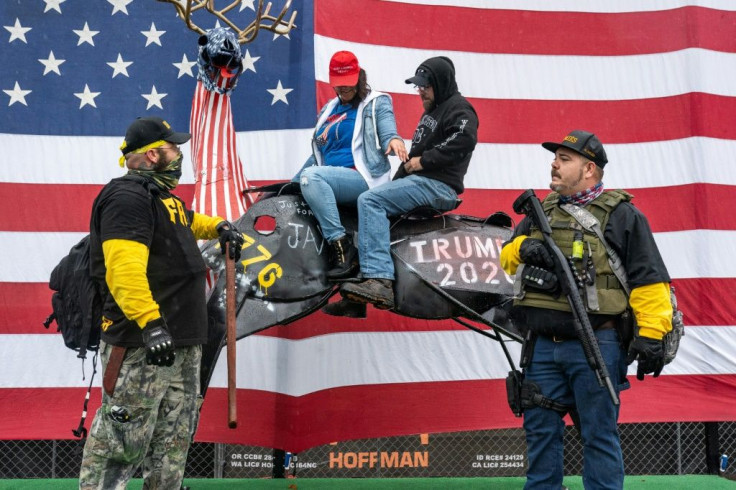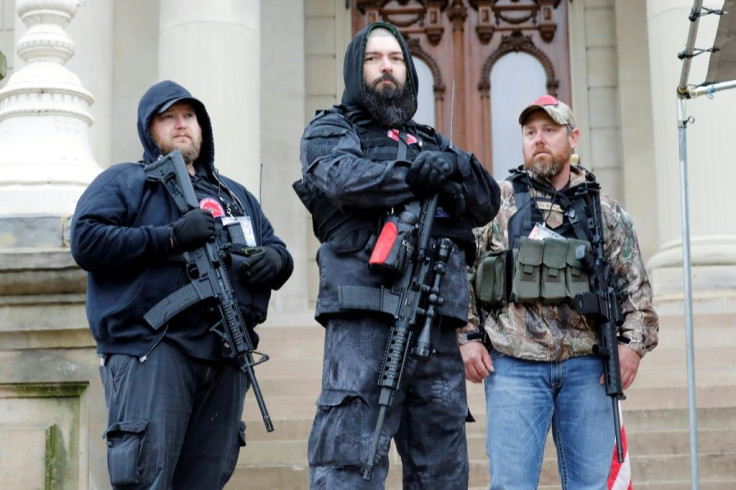US Struggles To Confront Far Right Threat
The violent assault on the US Capitol by supporters of President Donald Trump underscored how unready the United States is to confront its growing right-wing extremist threat, despite years of warnings.
The FBI only acknowledged three years ago, after several mass shootings, that the far right poses a significantly greater terror danger than Islamic jihadists.
Yet law enforcement was unprepared when an array of groups of die-hard Trump supporters, QAnon conspiracists and white supremacists stormed the seat of Congress on January 6, egged on by the president and his political cronies.
After the attack members of Congress called them "terrorists" and "insurrectionists."
But many lawmakers have cultivated the same people as supporters for years, making it hard to treat them as an ongoing threat the way the Islamic State group is, said Ali Soufan, a former FBI agent who is now chief executive of the Soufan Group.

"Unfortunately, we don't have a political will to go after these individuals proactively," Soufan told AFP.
"We wait for them to do something, and then we react."

There is no number to put on the size of the far right, because there are many groups over a broad spectrum -- some benign activists, some conspiracy mongers, and some violent neo-nazis.
But they count on significant support from the US population. A Quinnipiac poll released Monday said 10 percent of voters believed the people who stormed the Congress were "defending democracy."
That makes it harder to track threats, compared to monitoring for jihadist sentiment among a relatively small Muslim population.
"What happens if you are looking for revolutionary-right terrorists among 30 percent of the population?" said Matthew Feldman of the Center for Analysis of the Radical Right in Britain.
Even if profilers narrowed that to white men in a certain age range, he said, "You're looking at 20 million people."
That puts the potential extremists in every walk of life -- including, as the Capitol attack showed, among police themselves. And all are potentially dangerous, given the widespread gun ownership in the United States.

A second problem, Feldman said, is that jihadist ideology stands out clearly, while right-wing extremism "is next to the mainstream in American discourse," even openly touted in popular conservative media.
Extremism expert William Braniff says the government still under-allocates resources for monitoring and investigating the domestic extremist threat, compared to what it does for international threats.
And that doesn't make sense because domestic extremist attacks show a 60 percent success rate, said Braniff, director of the National Consortium for the Study of Terrorism and Responses to Terrorism at the University of Maryland.

Moreover, law enforcement lacks the legal powers needed to disrupt a domestic plot ahead of time, whereas these powers exist for international threats.
A white supremacist can freely spout his views on social media and recruit others and at the same time stockpile weapons, Braniff said.
"Those are all legally protected behaviors. And there's no tool to disrupt those violent plots, really, until after a law is broken, for example, somebody illegally procured a firearm," he said.
Braniff says one crucial step is now finally being taken, which is to push extremists off social media. On Monday, for example, Twitter announced it has shut down 70,000 QAnon accounts.
"We have to prevent the mainstreaming of violent extremist ideologies and conspiracies," he said.
"Because if it goes mainstream, in the direction that it's currently headed, it will be really impossible to unwind."
A more controversial move would be to begin formally designating extremist groups, the way global terror groups are branded, or passing a domestic terror law to take them down.
Soufan points out the European countries have named and banned extreme right-wing groups.
And Washington took a step in that direction last April when it designated as a terror threat the Russian Imperial Movement, made up of extremists with sympathizers in the United States.
He says that could be done here with a domestic terror law.
But others warn that it would become a much-abused political tool to attack groups that don't deserve the label.
"You start giving police those powers and you will find that Black Lives Matter protests ... are going to get slapped with domestic terrorism" charges, said Feldman.
Some hope that with Trump's exit from the White House, the problem will go away. But Braniff says that is wishful thinking.
"Many of these ideas are not unique or new to the Trump administration," he said.
"You're never done marginalizing these (extremist) narratives. You can't really let your guard down because they will resurface when allowed."
pmh/dw
© Copyright AFP {{Year}}. All rights reserved.





















